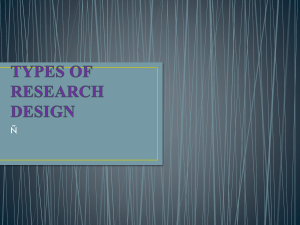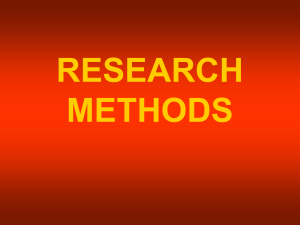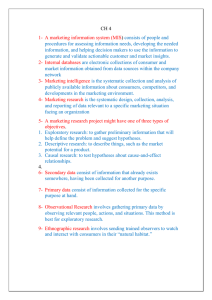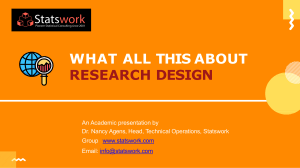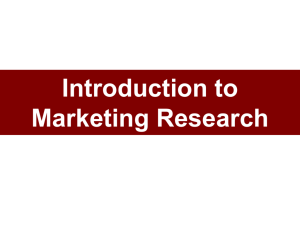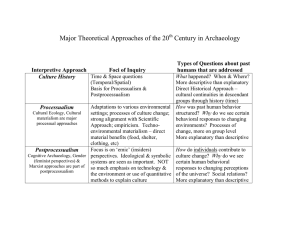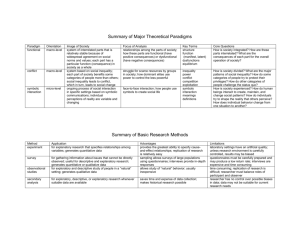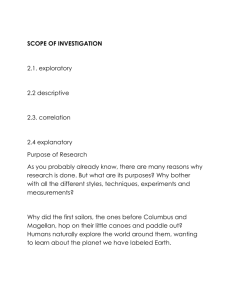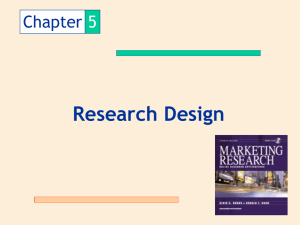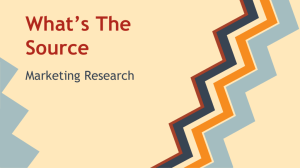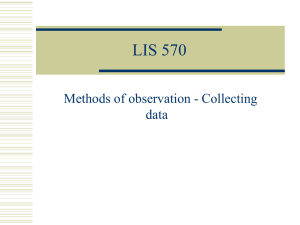Research Design PowerPoint
advertisement
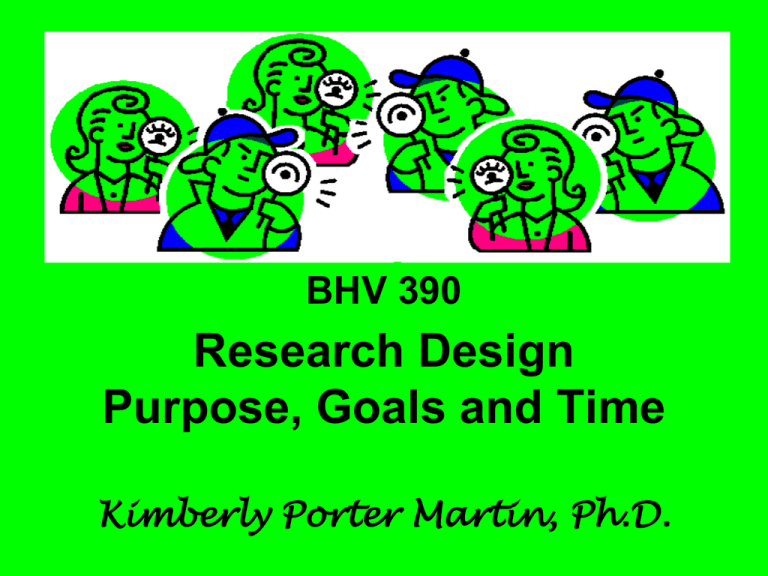
BHV 390 Research Design Purpose, Goals and Time Kimberly Porter Martin, Ph.D. Dimensions of Research • Purposes of research studies Exploratory research and Descriptive Research Explanatory research • Uses of Research Basic and Applied Research Evaluation Research • Time dimension in research Cross Sectional Research Longitudinal Trend/Time Series Panel Cohort Basic and Applied Research • Basic research is detached, scientific, and academically oriented. • Applied research is pragmatic, problem solving and reform oriented. Basic Research • The goal is to contribute to basic or theoretical knowledge. • Problems and subjects are selected with a focus on the next logical step in understanding an issue. • The research is judged by absolute standards. • Internal logic and rigor are key to research. • Success comes via publication in scholarly journals. Basic Research Features • • • • • It is largely university-based. It’s goal is knowledge-building. It normally involves theory testing. It prefers experiments. It often requires long-term studies. Applied Research • Research is part of a job, and is judged by sponsors or outsiders. • The problems and subjects studied are narrowly constrained. • The research standards depend on the results. • Generalizing results for sponsors is key to applied research. • The goal is to develop practical payoffs or results. • Success is defined by results that can used by the sponsors and others. Types of Applied Research • Evaluation research – to assess results • Social impact studies – to inform policy • Action research – to change a situation The Three Purposes of Research • Exploratory research investigates issues or populations for which little is known. • Descriptive research provides detailed information about the nature of issues, individuals or populations. • Explanatory research investigates the relationship between two or more variables. Goals of Exploratory Research • Gather basic information about the nature of an issue, individual, population or setting. • Formulate and focus questions about an issue, individual, population or setting. • Determine what kinds of information should be collected to better understand the issue, individual, population or setting • Decide what can be measured or described within the setting. • Develop research questions about the issue, individual, population or setting. Goals of Descriptive Research • • • • • • Provide a detailed, accurate picture. Locate new data. Create a set of categories. Clarify the sequence of steps. Document causal processes. Report background and context. Goals of Explanatory Research • Test a theory’s predictions. • Elaborate or enrich the theory by testing new hypotheses or replicating tests of existing hypotheses. • Extend the theory to new issues by testing new hypotheses . • Support or refute hypotheses or explanations. • Link causes with general principles. • Determine which explanations work best. Time Dimension in Research • Cross Sectional research is like a snapshot; gathering data at one point in time. • Longitudinal research, analogous to a movie or video; investigations gather data at multiple points in time. Longitudinal Designs • Trend or Time Series Studies are multiple studies of different samples over some period of time (e.g.: opinion surveys). • Cohort research involves multiple studies of different samples of similar categories or groups (e.g. students entering college this year). • Panel research involves multiple studies of the same sample over an extended period of time. Other Factors in Research Design • • • • • • Emic Vs. Etic Data Quantitative Vs. Qualitative Data Discrete Vs. Continuous Data Association Vs. Cause and Effect Validity Reliability
